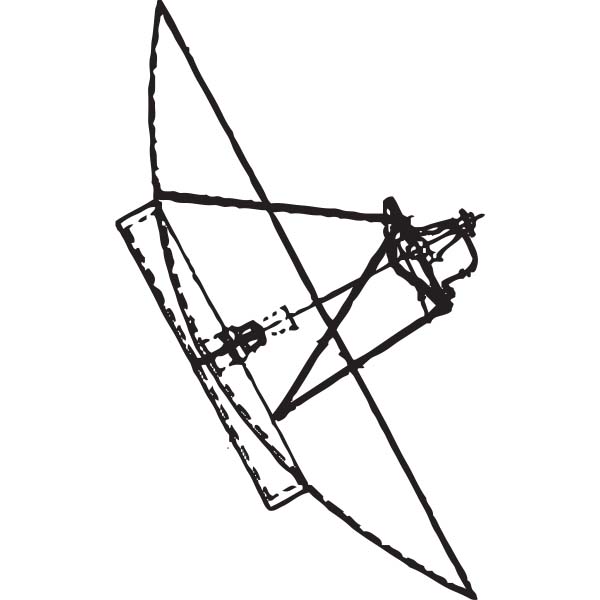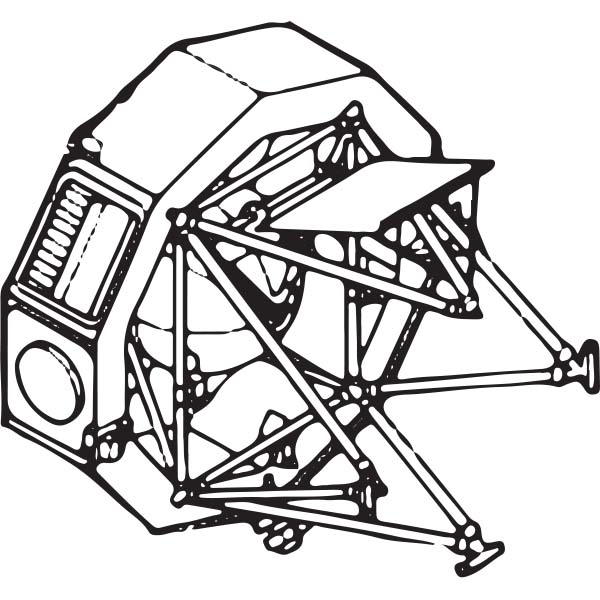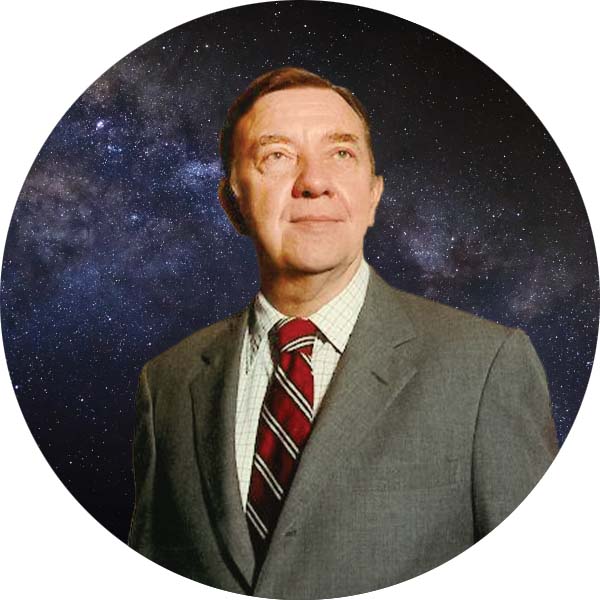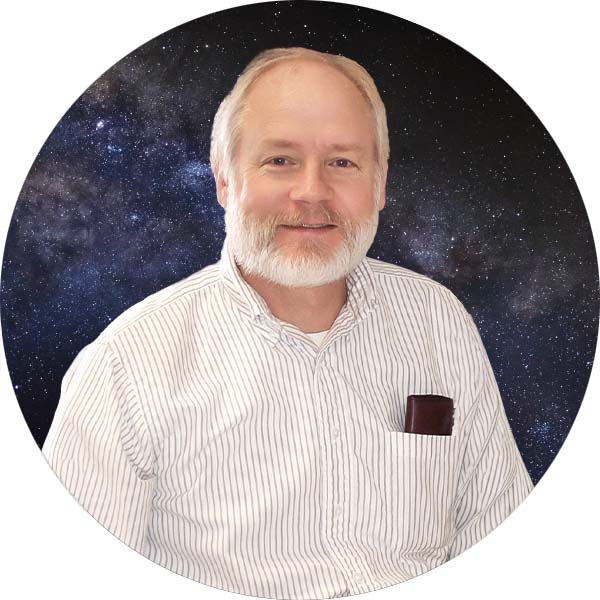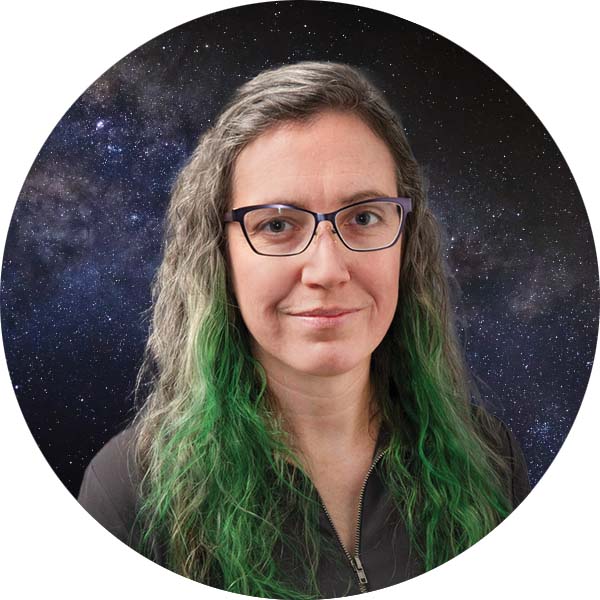Bon Voyage: From Iowa to the Final Frontier
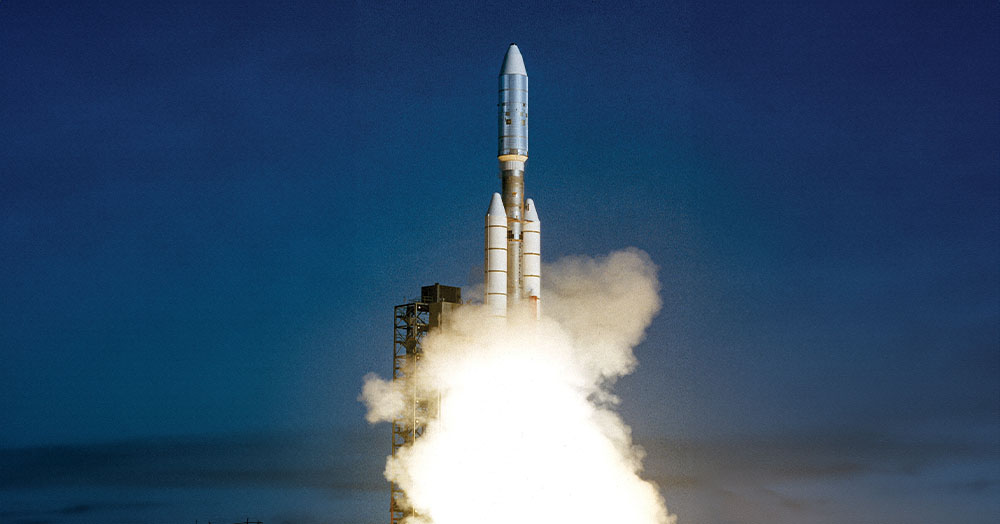 PHOTO: NASA
Voyager 1 launches in 1977 from Kennedy Space Center in Cape Canaveral, Florida, marking the beginning of a nearly five-decade mission.
PHOTO: NASA
Voyager 1 launches in 1977 from Kennedy Space Center in Cape Canaveral, Florida, marking the beginning of a nearly five-decade mission.
Even from 15 billion miles away, it was clear something had gone awry.
Late last year, the usually reliable Voyager 1 spacecraft was sending an undecipherable jumble of code back to scientists on Earth. Originally only meant to last for five years, the spacecraft had spent nearly five decades taking awe-inspiring photos of planets and sharing invaluable data revolutionizing human understanding of the solar system. In 2013, the spacecraft became the first human-made object to enter interstellar space, or the region between stars. Now researchers around the world were worried that the pioneering spaceship had become unreachable.
Allison Jaynes was particularly perturbed by the disconnect. An associate professor who joined the University of Iowa’s Department of Physics and Astronomy in 2017, Jaynes works closely with NASA colleagues to decode data collected by Voyager 1’s plasma wave instrument. The tool—which helped establish the UI’s longstanding partnership with NASA when it was built at Iowa nearly half a century ago—has kept a detailed record of the plasma that pulsates through the entire solar system.
When Voyager 1 went offline, the plasma wave instrument was collecting insights into the cosmic conditions of interstellar space. Jaynes worried that this irreplaceable data was stranded across the universe. “All this data was just sitting there, but we could not access it because we lost communication with Voyager,” Jaynes recalls. For months, the silence was stifling.
Was data from NASA’s most distant spacecraft forever lost in space?
 PHOTO: UI DEPARTMENT OF PHYSICS AND ASTRONOMY
From left, University of Iowa scientists Don Gurnett, James Van Allen, Iver Cairns, and Dave Barbosa study Voyager's 1989 Neptune flyby.
PHOTO: UI DEPARTMENT OF PHYSICS AND ASTRONOMY
From left, University of Iowa scientists Don Gurnett, James Van Allen, Iver Cairns, and Dave Barbosa study Voyager's 1989 Neptune flyby.
An Ambitious Mission
The whole journey began in September 1977, when Voyager 1 and its identical twin, Voyager 2, launched weeks apart in Cape Canaveral, Florida.
The two NASA spacecraft were bound for the outer solar system, where a multitude of moons rotate around gaseous giants and icy planets. Every 176 years, cosmic conditions align as they did in 1977 to enable a spacecraft to visit all four of the solar system’s outer planets—Jupiter, Saturn, Uranus, and Neptune—by using the gravitational forces of each planet to sling the spacecraft along to the next.
Now approaching 47 years in space, the twin spacecraft have conducted flybys of all the outer planets at 38,000 mph and observed nearly 50 different moons. They discovered giant volcanoes on Jupiter’s moon Io that spew out sulfur to heights 30 times higher than Mount Everest and outlined the intricate structure of Saturn’s rings for the first time.
To make these discoveries, the two spacecraft are outfitted with a battery of scientific tools. One of these devices is called a plasma wave instrument. This tool detects radio waves and can measure the densities of plasma “winds” that travel across the solar system. To design and calibrate the instrument, NASA turned to its trusted collaborators in the UI Department of Physics and Astronomy.
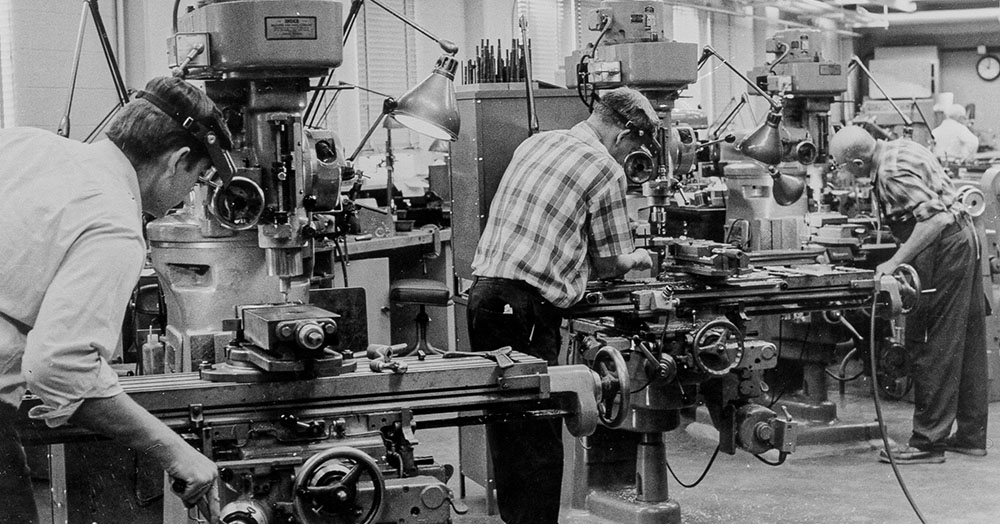 PHOTO: UI DEPARTMENT OF PHYSICS AND ASTRONOMY
The UI Department of Physics and Astronomy machine shop prepares the plasma wave subsystem instrument case for Voyager ahead of the 1977 launch.
PHOTO: UI DEPARTMENT OF PHYSICS AND ASTRONOMY
The UI Department of Physics and Astronomy machine shop prepares the plasma wave subsystem instrument case for Voyager ahead of the 1977 launch.
Outfitting Cosmic Campaigns
As the old Iowa adage goes: If you build it, they will come. This was why astronomers and high-ranking government officials were coming in droves to Iowa City as far back as the 1950s and ’60s. The United States was desperate to make up ground in the Space Race, and the UI had the pioneering engineers and physicists to get them to the moon and beyond.
Over the ensuing 60 years, UI researchers have designed and built scientific instruments for dozens of high-profile NASA missions that explored planets and moons throughout the solar system. It all started with UI physicist James Van Allen (36MS, 39PhD). In 1958, Van Allen was in the Pentagon War Room when Explorer 1 became the first American satellite to reach space. On board was a scientific instrument called a Geiger tube designed by Van Allen and his team to measure cosmic radiation. When Explorer 1 exited Earth’s atmosphere, Van Allen’s Geiger tube became the first scientific instrument in space. The Geiger tube would also make one of the first major discoveries of the Space Age by revealing radioactive regions of charged particles that circle the Earth, which are now known as the Van Allen radiation belts.
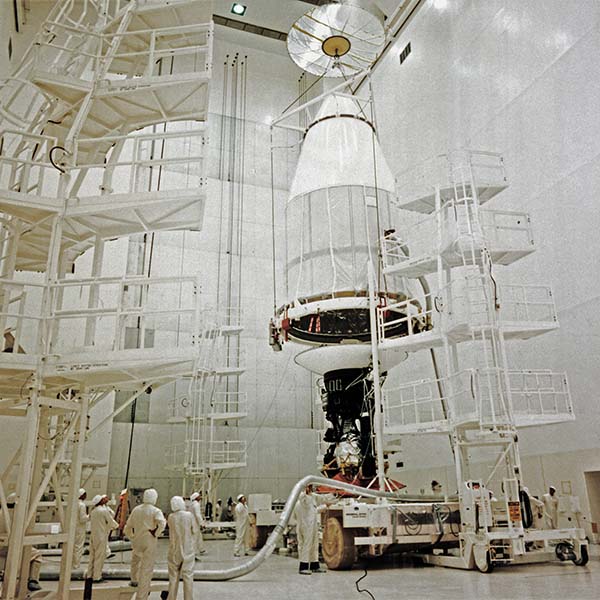 PHOTO: NASA/JPL-Caltech
Voyager 2 is pictured in 1977 at the Spacecraft Assembly and Encapsulation Facility at NASA's Kennedy Space Center in Cape Canaveral, Florida.
PHOTO: NASA/JPL-Caltech
Voyager 2 is pictured in 1977 at the Spacecraft Assembly and Encapsulation Facility at NASA's Kennedy Space Center in Cape Canaveral, Florida.
The success of Explorer 1 shot Van Allen’s profile into the scientific stratosphere. The “father of scientific space exploration” was interviewed by Walter Cronkite, and his visage graced the cover of Time magazine in 1959. All this publicity also boosted Van Allen’s burgeoning program. Between 1951 and 1975, the UI operated the largest space instrumentation lab in the world. To keep this lab firing on all cylinders, Van Allen relied on a cadre of renowned researchers and an ever-expanding outfit of doctoral and undergraduate students.
Bill Kurth (73BA, 75MS, 79PhD) joined this cohort shortly after he began attending Iowa as a freshman in 1969. As an amateur astronomer growing up in Cedar Rapids, Kurth would use his telescope to explore the night sky. Sometimes he and his friends spotted auroras igniting the dark skies west of town. These glimmering displays fascinated Kurth, especially after trips to the local library revealed little about the origins of these cosmic light shows.
During his sophomore year at Iowa, Kurth volunteered to help one of his physics professors and soon began calibrating scientific instruments for Hawkeye, a spacecraft designed and built at the UI. The satellite was launched in 1974 to survey the magnetic fields above Earth’s polar latitudes. Over the next four years, Hawkeye orbited the Earth nearly 700 times and provided scientific fodder for dozens of publications. These included insights into how electromagnetic forces interplay with solar energy to spark the auroras that had long fascinated Kurth. “I was hooked,” he recalls.
Data from Hawkeye fueled Kurth’s PhD thesis. While he pursued graduate degrees, he also became involved with an even more ambitious project that was taking over the department—building instrumentation for a set of NASA spacecraft named Voyager. By the time Kurth defended his thesis in 1979, Voyager was soaring towards Jupiter. The desire to see where the spacecraft went next tethered Kurth to Iowa like a gravitational force. “I asked if I could stick around to see what comes back from Voyager,” he says, “and I’m still doing that.”
For decades, Kurth served as a co-investigator of the Voyager project with his mentor, space physicist Don Gurnett (62BSEE, 63MS, 65PhD). Like Kurth, Gurnett—who died in 2022—joined Van Allen’s program as an undergraduate and spent the rest of his career at Iowa. He served 34 years as the principal investigator for the plasma wave instrument aboard the Voyagers.
Passing the Boundary
Until it went silent last year, operating the plasma wave instrument had for decades been a relatively straightforward task for Iowa’s scientists. Beyond turning it on and off (“and we don’t like to ever turn the instrument off,” Kurth says), the team relies on only a few commands to control the instrument. One involves operating a set of attenuators, which reduce the strength of signals like inverse amplifiers. These were installed to help the instrument sift through intense waves that the researchers expected Voyager to encounter near Jupiter. But these waves never swamped the instrument, and the attenuators have never been activated. The other command turns on a specialized receiver that has collected high-resolution data on plasma waves throughout the solar system.
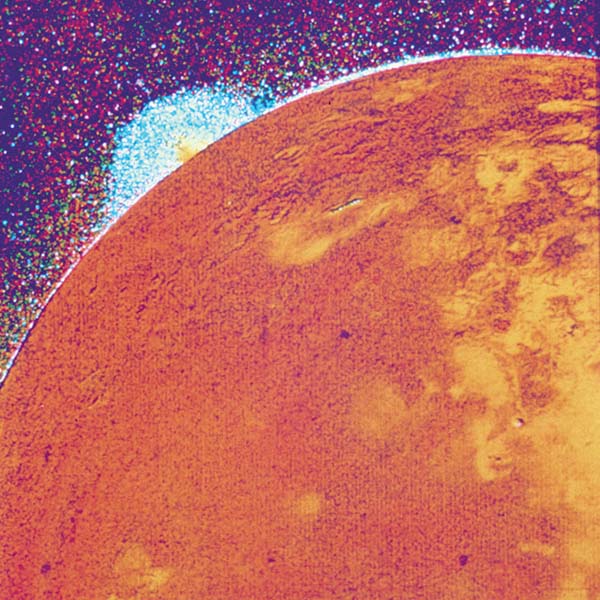 PHOTO: NASA
An image of a volcanic eruption on Jupiter's moon Io is captured by Voyager 1 in 1979.
PHOTO: NASA
An image of a volcanic eruption on Jupiter's moon Io is captured by Voyager 1 in 1979.
Interpreting what the plasma wave instrument is collecting is much more complex. But it has led to incredible insights. In 1979, the instrument detected radio emissions from lightning in Jupiter’s atmosphere. This was the first time lightning was observed outside of Earth’s atmosphere. “Nobody really knew whether lightning could exist on other planets or not,” Kurth says. “We went to Jupiter and found it.”
In 2013, the plasma wave instrument made its largest discovery yet when it detected a dramatic change in the plasma conditions near the edge of the solar system. The dense plume of plasma emanating from the sun is known as the solar wind. This wind moves throughout a region known as the heliosphere. The heliosphere is essentially a big bubble of plasma that contains Earth and its planetary neighbors and extends roughly three times the distance of Pluto into space. What lies outside the heliosphere is known as the interstellar medium.
Plasma near the sun is made up of a dense number of electrons and ions. But as the plasma moves farther from its solar source, its density gradually decreases. Kurth compares this phenomenon to an expanding gas—the farther the plasma expands, the less dense it becomes.
That’s why it was surprising when Voyager 1 was suddenly detecting a dense plasma, again at the farthest points of the heliosphere where the plasma usually peters out. This piqued the interest of the team, especially Gurnett, who had theorized that plasma waves called plasma oscillations would be found beyond the edge of the heliosphere based on radio waves Voyager 1 recorded as it soared beyond Saturn in the early 1990s. Observing these theoretical oscillations seemed like a longshot. “The probability of having Voyager fly through the right region of space at the right time to actually detect them seemed slim to none,” Kurth says.
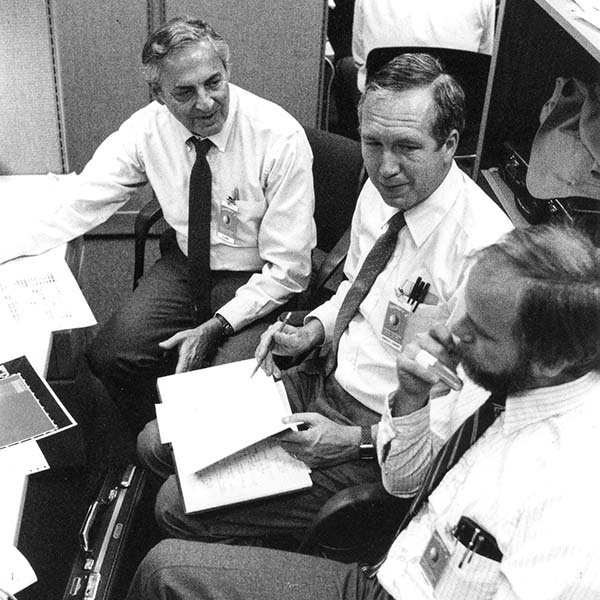 PHOTO: UI DEPARTMENT OF PHYSICS AND ASTRONOMY
From left, UI scientists Fred Scarf, Don Gurnett, and Bill Kurth conduct their work as Voyager plasma wave subsystem investigators in 1986.
PHOTO: UI DEPARTMENT OF PHYSICS AND ASTRONOMY
From left, UI scientists Fred Scarf, Don Gurnett, and Bill Kurth conduct their work as Voyager plasma wave subsystem investigators in 1986.
In those days, Kurth made a habit of sifting through the plasma wave data at night when it arrived from NASA’s Jet Propulsion Lab in California. He remembers that April night when the high plasma density readings came through and knowing “within 10 seconds what they meant.” The next day he shared the data with Gurnett, whose theory had been validated.
The increase in plasma density Voyager was recording was not seismic. For example, the plasma density was actually much weaker than it is near Earth. But the density was at least 50 times as dense as those usually found in the outer heliosphere. Combined with other evidence—like the increase in cosmic galactic rays, which originate outside the solar system—these density readings provided “the last piece of the puzzle that convinced us that we had crossed into the interstellar medium,” Kurth says.
Voyager 1 had become the first spacecraft to pass through the heliopause, the boundary that separates the heliosphere bubble from interstellar space. Gurnett, Kurth, and their colleagues published the update in the journal Science in September 2013, and news that Voyager had entered the final frontier captivated audiences around the world in a similar vein to the press Van Allen once received. “It was one of the greatest scientific events of my career,” Gurnett recalled in 2017. “We were there at the beginning of discovery.”
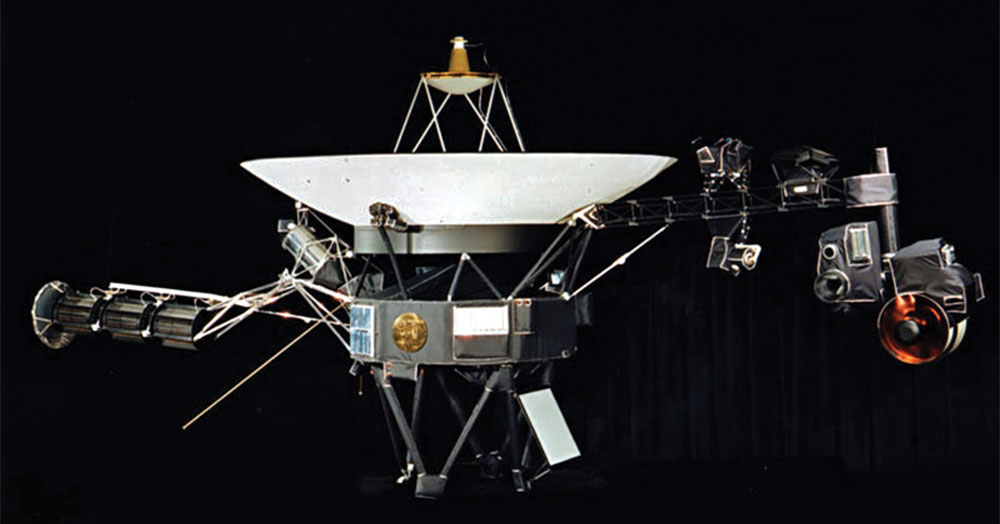 PHOTO: NASA/JPL-CALTECH
Voyager's components include a high-gain antenna, the body of the craft known as "the bus," and a gold-plated phonograph with images and recordings from Earth (see sidebar).
PHOTO: NASA/JPL-CALTECH
Voyager's components include a high-gain antenna, the body of the craft known as "the bus," and a gold-plated phonograph with images and recordings from Earth (see sidebar).
The Journey Continues
For most of the next decade, the Voyagers sent back a steady stream of scientific data collected where no spacecraft had been before.
Crossing this cosmic chasm takes quite a bit of time and a multitude of powerful radio dishes. But the insights are well worth the wait for Jaynes, who views the mission as “the shining example of our desire to reach out and discover what is elsewhere in the universe.” She was working as a post-doc on the Van Allen radiation belts at the University of Colorado when Kurth and Gurnett determined that Voyager 1 had entered interstellar space. From her office in Iowa’s Van Allen Hall, Jaynes now serves as a co-investigator on the Voyager mission with Kurth, who took over the principal investigator role after Gurnett’s death. Once the data makes it back to Earth, the UI researchers work with their partners at NASA and other institutions to understand the instrument’s readings.
These readings became impossible to decipher when Voyager 1 experienced an anomaly. The spacecraft usually beamed its data to Earth in binary codes of ones and zeroes. But beginning in November 2023, Voyager 1 began sending repeating patterns of unusable code back to Earth, leading many researchers to worry that the aging spacecraft had finally reached the end of its mission.
While the spacecraft had lasted nearly 10 times longer than initially thought, NASA scientists were not ready to let them drift into the void. Researchers at the Jet Propulsion Lab worked tirelessly to pinpoint the issue causing the disconnect.
The NASA team initially sent commands aimed at rebooting Voyager 1’s computer systems. This past March, they located the region of the spacecraft’s data system that appeared to be producing the jumbled data. An engineer was able to decode the signal and access the data system’s entire memory. This helped the team locate the corrupted region of memory, which was stored on a single chip that was either worn down or exposed to damaging radiation. Because they couldn’t replace the chip from 15 billion miles away, the team programmed around the infected memory to restore the system’s ability to collect and send data to Earth.
“[Voyager 1 and 2] have shown that nature is so much more inventive than our minds are.” —Bill Kurth
On April 20, the team received the first coherent data from Voyager 1 in five months. “It is just amazing that they were able to recover it from this anomaly,” Jaynes says. Since the recovery, Voyager 1 has continued to collect scientific data.
The data from Voyager 1 is crucial to understanding cosmic conditions outside the heliosphere. Recently, the plasma wave instrument has provided insights into charged dust particles that float throughout space, which are scarcer in interstellar space than inside the heliosphere.
To Kurth, the Voyagers have already outpaced any expectations, and not just because they have outlived their initial lifespan by more than 41 years. These spaceships have provided insights into the basic building blocks of science itself.
“They have shown that nature is so much more inventive than our minds are,” Kurth says. “We found situations in the outer solar system and the interstellar medium that we just hadn’t fathomed before, which is the reason we do missions of discovery.”
Deciphering Voyager data is paramount. While NASA was able to reconnect with Voyager 1 after its anomaly, these aging spacecraft will not be reachable forever. Voyager 1 and 2 both are powered by a limited power supply of decaying plutonium. Once that power runs out—NASA scientists have their fingers crossed that it will be after 2027 for the 50th anniversary of the launch—the Voyagers will fall silent as they fade into the final frontier. But the data they leave behind will continue to guide the Earthlings stretching out for the stars.
 PHOTO COURTESY Jack Tamisiea
PHOTO COURTESY Jack Tamisiea
Jack Tamisiea is a science writer based in Washington, D.C., who covers natural history and environmental issues. Tamisiea’s work has appeared in The New York Times, National Geographic, Scientific American, Hakai Magazine, Johns Hopkins Magazine, and many others. Tamisiea is also the son of Iowa alumnus John Tamisiea (87BBA) and grew up an avid Hawkeye fan.


